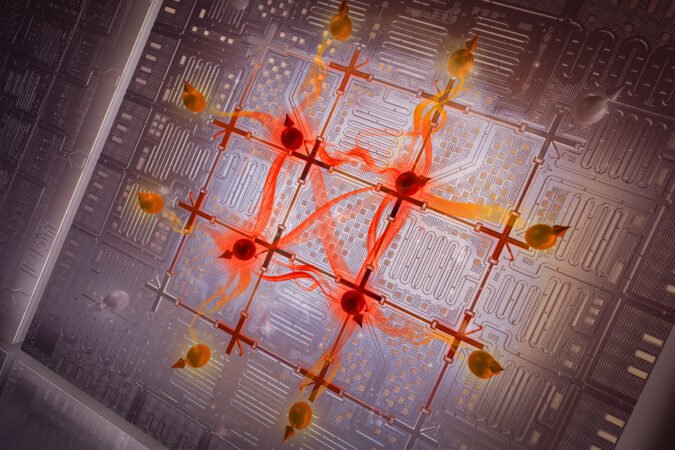Fast Facts
-
Entanglement Exploration: MIT researchers developed a technique to efficiently generate and probe entanglement in superconducting qubits, enhancing the understanding of how quantum systems store and process information.
-
Volume vs. Area Law: The study highlights the distinction between volume-law and area-law entanglement, crucial for realizing quantum advantages, with implications for scaling quantum technology beyond classical limits.
-
Advanced Quantum Control: Using precise microwave control, researchers demonstrated the ability to transition between different entanglement types, confirming theoretical predictions about entanglement behavior in quantum systems.
- Future Applications: This technique could pave the way for studying complex quantum systems’ thermodynamics, providing insights unattainable by classical computing methods.
MIT Scientists Break Ground in Quantum Entanglement Techniques
Scientists at the Massachusetts Institute of Technology (MIT) have made significant strides in understanding quantum entanglement. This phenomenon, a complex relationship among quantum particles, plays a crucial role in the functioning of quantum computers. The researchers developed a new technique to effectively generate and manipulate entanglement among superconducting qubits.
Amir H. Karamlou, the lead author, emphasized that this work represents a leap in using quantum processors to deepen our understanding of physics. He stated, "We have a good roadmap for scaling this technology and methodology beyond the reach of classical computing." This research opens avenues for improved storage and processing of information in quantum systems.
The study centers on two types of entanglement: area-law and volume-law. Volume-law entanglement scales with the size of a system, making it essential for achieving quantum advantages. Conversely, area-law entanglement grows with the number of connections between qubits. Understanding these distinctions could enhance the performance of quantum algorithms.
In their experiment, the MIT team employed 16 qubits arranged in a two-dimensional grid. Using precise microwave technology, they could shift the entanglement state from volume-law to area-law by varying the microwave frequency. This method successfully demonstrates the crossover between the two types of entanglement, confirming previous theoretical predictions.
The ability to create and assess different entanglement structures will assist in advancing our understanding of complex quantum systems. Karamlou noted that their findings may significantly impact how scientists characterize large-scale quantum systems, which are currently challenging to analyze using traditional methods.
William D. Oliver, a co-author and professor at MIT, stated that these experimental advancements highlight the potential of quantum processors. The research, published in Nature, showcases the capabilities of superconducting qubits and paves the way for future studies on thermodynamics and entanglement in many-body systems.
Funding for this research comes from several prestigious organizations, including the U.S. Department of Energy and NASA. These developments hint at a promising future for quantum computing, which could revolutionize technology as we know it.
Stay Ahead with the Latest Tech Trends
Stay informed on the revolutionary breakthroughs in Quantum Computing research.
Discover archived knowledge and digital history on the Internet Archive.
QuantumV1
https://news.mit.edu/2024/mit-scientists-tune-entanglement-structure-with-qubits-array-0424

